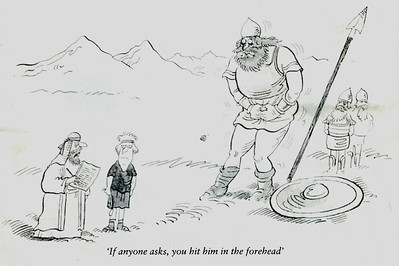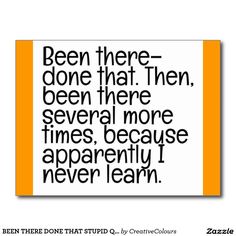|
|
|
February 19th, 2020 by Miki Saxon

Maybe it takes tech to beat tech.
Or founders who plan to walk their talk even after them become successful, unlike the “don’t be evil” guys.
More entrepreneurs are pursuing social or environmental goals, said Greg Brown, a professor of finance at the Kenan Institute of Private Enterprise at the University of North Carolina.
Companies like Toms, Warby Parker and Uncommon Goods have pushed this concept into the mainstream by creating successful business models built around helping others. This trend has led to the rise of B Corporations, a certification for companies that meet high standards of social responsibility. The program started in 2007, and now more than 2,500 companies have been certified in more than 50 countries.
Including Afghanistan.
Not all these startups make it and many are choosing to do it sans investors who often start pushing for growth and revenue, social mission be dammed.
And they are slowly succeeding.
Companies like Moka are a reflection of how consumers think as well, Professor Brown said. As people’s wealth increases, they think more about quality and less about quantity. They also consider the social context of what they’re buying.
Others are developing tech to defend against tech.
The “bracelet of silence” is not the first device invented by researchers to stuff up digital assistants’ ears. In 2018, two designers created Project Alias, an appendage that can be placed over a smart speaker to deafen it. But Ms. Zheng argues that a jammer should be portable to protect people as they move through different environments, given that you don’t always know where a microphone is lurking.
These may not be the solution, assuming there is one, but this definitely isn’t.
Rather than building individual defenses, Mr. Hartzog believes, we need policymakers to pass laws that more effectively guard our privacy and give us control over our data.
You have on to consider tech’s actions in Europe to know that laws don’t stop tech.
There’s another potential positive brewing in tech — actually a disruption of sorts.
That’s the long-time coming move away from current ageist thinking.
As brilliant as young coders are, though, the industry can’t survive on technical chops alone. Last year, Harvard Business Review shared that the average age of a successful startup founder isn’t 25 or 30—it’s 45 years old.
Call it a miracle, but investors, the majority over 40, are starting to value the experience that comes with age.
Hopefully, in the long-run, the potential for success will outweigh the hang-up on age.
As a whole, entrepreneurial communities also need to do more to bring diverse groups to meet-ups, panels and speaking engagements. The importance of having more voices at the table can’t be diminished.
Let’s just hope it isn’t too long.
Image credit: Ron Mader
Tags: age, B Corp, bias, big tech, corporate social responsibility, discrimination, disruption, diversity, privacy, social responsibility, technology
Posted in Culture, Entrepreneurs, Motivation, Retention |
No Comments »
Sphere: Related Content
*/?>
February 18th, 2020 by Miki Saxon

If, like me, you wonder if there is anything to stop tech from its all-consuming forward march, there may be.
Tech needs two things to keep going
So what happens when those segments start rebelling?
There’s a tech backlash best seen in the newest crop of workers.
“Working at Google or Facebook seemed like the coolest thing ever my freshman year, because you’d get paid a ton of money but it was socially responsible,” said Chand Rajendra-Nicolucci, 21, a senior at the University of Michigan. “It was like a utopian workplace.”
Now, he said, “there’s more hesitation about the moral qualities of these jobs. It’s like how people look at Wall Street.”
“It felt like in my freshman year Google, Palantir and Facebook were these shiny places everyone wanted to be. It was like, ‘Wow, you work at Facebook. You must be really smart,’” said Ms. Dogru, 23. “Now if a classmate tells me they’re joining Palantir or Facebook, there’s an awkward gap where they feel like they have to justify themselves.”
Audrey Steinkamp, a 19-year-old sophomore at Yale, which sends about 10 percent of each graduating class into tech, said that taking a job in Silicon Valley is seen as “selling out,” no different from the economics majors going into consulting who are “lovingly and not-so-lovingly called ‘snakes.’”
“The work you do at a place like Facebook could be harmful at a much larger scale than an investment bank,” Ms. Dogru said. “It’s in the pockets of millions of people, and it’s a source of news for millions of people. It’s working at a scary scale.”
Oops, seems that the moral considerations of where to work are of much more importance for both college and grad students.
Agriculture is supposed to be a market “ripe for disruption,” including tractors that do everything except scratch your back.
You’d think farmers would be cheering.
Instead they are searching out tractors made in the 1970s and 80s that are more profitable to use.
Tractors manufactured in the late 1970s and 1980s are some of the hottest items in farm auctions across the Midwest these days — and it’s not because they’re antiques.
Cost-conscious farmers are looking for bargains, and tractors from that era are well-built and totally functional, and aren’t as complicated or expensive to repair as more recent models that run on sophisticated software.
And it’s the “sophisticated software” they don’t want.
But tractors from the 1970s and 1980s aren’t so dramatically different from tractors produced in the 2000s, other than the irksome software, and at a time when farmers are struggling financially, older tractors can make a lot of business sense.
Both are good news.
Constricting the worker pipeline at one end and a user rebellion at the other are two of the few things that can act as Daniel to tech’s Goliath.
Image credit: Roger W
Tags: disruption, Facebook, Google, moral, morality, wall street
Posted in Culture, Ethics, Hiring |
No Comments »
Sphere: Related Content
*/?>
February 17th, 2020 by Miki Saxon

Poking through 11+ years of posts I find information that’s as useful now as when it was written.
Golden Oldies is a collection of the most relevant and timeless posts during that time.
This Oldie doesn’t need commentary. It was valid when I wrote it in 2006, it’s even more valid in today’s world of social media and will still be valid at all times in the future.
Read other Golden Oldies here.
I frequently tell clients and readers to slow down; unwire themselves; learn to say no.
So my next rule may sound counterproductive, but it’s not.
Don’t live with the brakes on!
Taking off the brakes isn’t about going faster, it’s about taking time for the stuff that stops when you move too fast—such as creativity.
So take the brakes off your imagination; take time to dream; make more time for doing nothing and watch your world expand and sizzle.
Image credit: Paul Fris
Tags: dream, Miki's Rules to Live by, unwire
Posted in Golden Oldies, Innovation, Personal Growth |
No Comments »
Sphere: Related Content
*/?>
February 12th, 2020 by Miki Saxon

While AI can do some things on its own, it’s a blunt force, ignorant of nuance, but embracing all the bias, prejudices, bigotry and downright stupidity of past generations thanks to its training.
Using AI to make judgement calls that are implemented sans human involvement is like using a five pound sledgehammer on a thumbtack.
Yesterday looked at what AI can miss in hiring situations, but candidates at least have more choice than others do.
AI is being used extensively around the world by government and law enforcement where its bias is especially hard on people of color.
The algorithm is one of many making decisions about people’s lives in the United States and Europe. Local authorities use so-called predictive algorithms to set police patrols, prison sentences and probation rules. In the Netherlands, an algorithm flagged welfare fraud risks. A British city rates which teenagers are most likely to become criminals.
Human judgement may be flawed and it does has the same prejudices, but it’s not inflexible, whereas AI is.
As the practice spreads into new places and new parts of government, United Nations investigators, civil rights lawyers, labor unions and community organizers have been pushing back.
Now schools are jumping on the bandwagon claiming that facial recognition will make schools safer, but not everyone agrees.
“Subjecting 5-year-olds to this technology will not make anyone safer, and we can’t allow invasive surveillance to become the norm in our public spaces,” said Stefanie Coyle, deputy director of the Education Policy Center for the New York Civil Liberties Union. (…)
Critics of the technology, including Mr. Shultz and the New York Civil Liberties Union, point to the growing evidence of racial bias in facial recognition systems. In December, the federal government released a study, one of the largest of its kind, that found that most commercial facial recognition systems exhibited bias, falsely identifying African-American and Asian faces 10 to 100 times more than Caucasian faces. Another federal study found a higher rate of mistaken matches among children.
So what do the kids think?
Students 13 and older are invited to comment. All comments are moderated by the Learning Network staff…
Read the Q&A to find out.
Image credit: Mike MacKenzie
Tags: AI, bias, education, facial recognition, psychological safety, stupidity
Posted in Culture, Leadership, Politics |
No Comments »
Sphere: Related Content
*/?>
February 11th, 2020 by Miki Saxon

Yesterday included a post about how tech has sold itself as the silver bullet solution to hiring people.
Algorithms actually do a lousy job of screening resumes and companies that rely on them miss a lot of great hires.
Why?
Because the only thing an algorithm can do is match key words and experience descriptions. Based on 13 years of tech recruiter experience I can tell you that rarely does anyone change jobs in order to do the same thing somewhere else, unless they hate their manager or the culture.
Not things that an algorithm is going to pick up on. Nor will the initial phone call usually made not by the hiring manager, but by someone who know little about the job other than to match the candidates responses to a list of “preferred” answers.
No discretionary knowledge based on the manager’s experience or the candidate’s potential.
We all know that management loves to save money and many of them feel that AI will allow them to reduce the most expensive item of their fixed costs, people — including managers.
Imagine an app giving you a quarterly evaluation—without a manager or HR rep in sight—and you have an idea of where this is potentially going.
What management forgets is that a company isn’t an entity at all. It’s a group of people, with shared values, all moving in the same direction, united in a shared vision and their efforts to reach a common goal.
It exists only as long as people are willing to join and are happy enough to stay — excessive turnover does not foster success.
So what do workers think about the use of AI/algorithms?
However, workers don’t necessarily like the idea of code taking over management functions—or hiring, for that matter. Pew research shows 57 percent of respondents think using algorithms for résumé screening is “unacceptable,” and 58 percent believe that bots taught by humans will always contain some bias. Nearly half (48 percent) of workers between the ages of 18 and 29 have some distrust of A.I. in hiring, showing that this negative perception isn’t going away anytime soon.
They are right to be distrustful, since AI is trained on historical datasets its “intelligence” includes all the bias, prejudices, bigotry and downright stupidity of past generations.
This is bad news for companies looking to “increase efficiency,” but great news for companies that recognize they aren’t hiring “resources” or “talent,” but people, with their infinite potential and inherent messiness.
Image credit: Mike MacKenzie
Tags: AI, bias, information bias, management approach, recruiting
Posted in Communication, Culture, Hiring, Motivation, Retention |
No Comments »
Sphere: Related Content
*/?>
February 10th, 2020 by Miki Saxon

Poking through 11+ years of posts I find information that’s as useful now as when it was written.
Golden Oldies is a collection of the most relevant and timeless posts during that time.
Way back in 2006 when I wrote “MAP—Your Silver Bullet” the world was a different place. Tech hadn’t yet sold it’s story that it would save the world and human bosses were still the key to performance and productivity.
Read other Golden Oldies here.
MAP—your silver bullet
I’ve got a secret to share. Most managers spend time, energy and money (their company’s and their own) in an effort to grow from manager to leader. They study examples and best practices, read books, attend seminars and classes, take advanced degrees, check out software, turn to the spiritual (if so inclined)—you name it and it’s been tried.
The dream is to find a silver bullet; the reality is various levels of incremental improvement; the payoff is enormous—both tangibly and intangibly.
Now for the secret. You already possess the closest thing to a silver bullet that exists and it’s right in your mind.
That’s right, it’s your MAP and, like a snowflake, it’s totally unique—yours, and yours alone. And the magic that turns the bullet from lead to silver is your ability to consciously choose to change your MAP through your own awareness.
How cool is that? The very thing that frees you to soar and it’s not only yours, but also within your control. Who can ask for anything more?
Never forget! You are the silver bullet!
Fast forward nine years and tech had sold business on the idea that it could do anything and fix everything. When I saw the article by Kentaro Toyama I thought it was time to revisit the subject.
Technology Alone Can’t Save the World
According to Kentaro Toyama, the W.K. Kellogg Associate Professor of Community Information at the University of Michigan School of Information and self-described “recovering technoholic,” technology isn’t the panacea it’s cracked up to be.
“Technology works best in organizations that are run well to begin with. (…) The technology industry itself has perpetuated the idea that technology will solve the world’s problems. (…) Everyone wants to believe the work they do is good for society. But a lot of people in the industry have drunk a little too much of their own marketing Kool-Aid.”
What is often ignored is that people are a necessary ingredient for the Kool-Aid to actually work.
The tech eco-system forgets a lesson driven home by Bill Gates in the 1995 book The Road Ahead.
“The first rule of any technology used in a business is that automation applied to an efficient operation will magnify the efficiency. The second is that automation applied to an inefficient operation will magnify the inefficiency.”
Aetna Insurance found this out when they first equipped their claims processors with their own terminals connected to the mainframe (before the advent of personal computers).
The effort was considered ground-breaking and was touted as a way to streamline the claims process.
It failed miserably, because the process itself wasn’t redesigned.
In short, claims had multiple steps with approval required at each. Because the process stayed the same, i.e., claims stalled in electronic form when someone in the approval process was on jury duty or out sick just as they did in the paper version.
Once people redesigned the process the desired efficiencies were reaped well beyond expectations.
Technology is a tool, not a silver bullet; the only real silver bullets are found within the human mind.
Ultimately the right thing is for us to find the optimal use of technology — not to eliminate it, but also not to assume that it can replace human skills.
Flickr image credit: Jason Rogers
Tags: management approach, MAP, MAP (mindset attitude philosophy), silver bullet, technology
Posted in Culture, Golden Oldies, Personal Growth |
No Comments »
Sphere: Related Content
*/?>
February 4th, 2020 by Miki Saxon

Image credit: BrainyQuote
Tags: fool, rules
Posted in Personal Growth |
No Comments »
Sphere: Related Content
*/?>
February 4th, 2020 by Miki Saxon

While success is most people’s goal, how they define it varies widely.
A couple of weeks ago Clay Christensen, who pioneered disruption theory and wrote The Innovator’s Dilemma, died.
KG sent me an a16z editorial about his effect on business, but I think the 2010 HBR interview called How Will You Measure Your Life? is much better when it comes to success.
Why?
Because it lays out his business principles tweaked so a person could build a personal culture that would assure happiness.
When the members of the [HBS] class of 2010 entered business school, the economy was strong and their post-graduation ambitions could be limitless. Just a few weeks later, the economy went into a tailspin. They’ve spent the past two years recalibrating their worldview and their definition of success.
In the spring, Harvard Business School’s graduating class asked HBS professor Clay Christensen to address them—but not on how to apply his principles and thinking to their post-HBS careers. The students wanted to know how to apply them to their personal lives.
The students had a front row seat to watch the economy go from hot to frigid, which taught them that careers weren’t everything.
On the last day of class, I ask my students to turn those theoretical lenses on themselves, to find cogent answers to three questions: First, how can I be sure that I’ll be happy in my career? Second, how can I be sure that my relationships with my spouse and my family become an enduring source of happiness? Third, how can I be sure I’ll stay out of jail? Though the last question sounds lighthearted, it’s not. Two of the 32 people in my Rhodes scholar class spent time in jail. Jeff Skilling of Enron fame was a classmate of mine at HBS. These were good guys—but something in their lives sent them off in the wrong direction.
Three simple questions, but three that few people, let alone MBA students, especially those at Harvard, focus on.
But what kind of life is it, if you are unhappy or have bad relationships with your family or cross the line, when with a little effort and planning you can avoid all three?
While Clay Christensen isn’t a silver life bullet, his thinking and approach come close.
Image credit: By World Economic Forum from Cologny, Switzerland – Leading Through Adversity: Clayton ChristensenUploaded by January, CC BY-SA 2.0
Tags: Clay Christensen, happiness, Harvard, harvard business school, success
Posted in Personal Growth, Role Models |
No Comments »
Sphere: Related Content
*/?>
February 3rd, 2020 by Miki Saxon
Poking through 11+ years of posts I find information that’s as useful now as when it was written.
Golden Oldies is a collection of the most relevant and timeless posts during that time.
Surprisingly, it is Millennials who are giving a lot of thought to dying and, in doing so, changing the conversations around it. All I can say is, it’s about time!” I get it. They are dedicated to directing how they live, want to control how they exit and are far more pragmatic about it than previous generations. I’m no Millennial, but over the decades I’ve given a lot of thought to the subject, too.
Read other Golden Oldies here.
What do you think about when you take stock of your life? What do you strive for? What makes you feel successful?
But first…
What I’m about to write is NOT a judgment call—having been brought up in a judgmental family I don’t judge. Sure, I have opinions, we all do, but I don’t judge. The most I can say is “X doesn’t work for me, but Y does.”
Granted, I might recommend Y; I might even argue passionately regarding the merits of Y, but in the end it’s your decision and you need to tweak/modify/change Y to fit your MAP—if you decide you have any interest in it at all—because Y is a product of my MAP and no two MAPs are identical.
Back to taking stock.
Someone once said to me,
“I still have more than half my life left to live… Still, with each birthday I feel the anxiety of wondering if I am living up to my potential. … Often, I can’t wake up from my daydreams of a disciplined and directed life long enough to make that life happen. … I have learned from experience that I need both [self awareness and willingness to change] if I want to be successful in life and leadership.”
I found it sad because the focus seemed to be so personally judgmental and the person set such store on an intangible like ‘leadership’—which, to have any real meaning, needs to be bestowed and substantiated by others.
But that is just me.
I’m substantially older than most of you and have bounced and blundered through life opening doors as the mood moved me.
I’ve made and lost money as well as friends as our lives diverged.
I once read that success is found in what you do for others, but I believe it’s also in what you don’t do and based on both I am enormously successful.
I’ve given a helping hand to hundreds, thus facilitating their ultimate success.
More importantly, I work hard at not hurting anyone by word or deed, advertently or inadvertently.
I doubt that I’m always successful, but I do try like hell.
I do not lie, cheat or steal.
If I were to have a tombstone (which I won’t, since I’m being composted, which is much better than cremation) it would look like this.

Image credit: JJ Chandler (site no longer exists)
Tags: judgement, judgemental, success
Posted in Personal Growth |
No Comments »
Sphere: Related Content
*/?>
January 29th, 2020 by Miki Saxon

If you interview or work for a unicorn or unicorn wannabe that excels at raising money you would be wise to take a step back.
Forget charisma and founder vision and consider what is really going on profit-wise and sustainability-wise.
Fast growth is good mainly for VCs, not employees.
If you can discipline yourself not to be dazzled by shiny words and concepts you can learn to sort the wheat from the chaff.
Do that, and you won’t need to buy this sign or tattoo the words on your frontal lobe. 
Image credits: Sarah Rebecca on Instagram and Zazzle
Tags: Travis Kalanick, unicorn, vision, WeWork
Posted in Culture, Hiring, Personal Growth |
No Comments »
Sphere: Related Content
*/?>
|
 Subscribe to
Subscribe to
MAPping Company Success
About Miki 
Clarify your exec summary, website, etc.
Have a quick question or just want to chat? Feel free to write or call me at 360.335.8054
The 12 Ingredients of a Fillable Req
CheatSheet for InterviewERS
CheatSheet for InterviewEEs™
Give your mind a rest. Here are 4 quick ways to get rid of kinks, break a logjam or juice your creativity!
Creative mousing
Bubblewrap!
Animal innovation
Brain teaser
The latest disaster is here at home; donate to the East Coast recovery efforts now!
Text REDCROSS to 90999 to make a $10 donation or call 00.733.2767. $10 really really does make a difference and you'll never miss it.
And always donate what you can whenever you can
The following accept cash and in-kind donations: Doctors Without Borders, UNICEF, Red Cross, World Food Program, Save the Children
*/
?>About Miki
About KG
Clarify your exec summary, website, marketing collateral, etc.
Have a question or just want to chat @ no cost? Feel free to write
Download useful assistance now.
Entrepreneurs face difficulties that are hard for most people to imagine, let alone understand. You can find anonymous help and connections that do understand at 7 cups of tea.
Crises never end.
$10 really does make a difference and you’ll never miss it,
while $10 a month has exponential power.
Always donate what you can whenever you can.
The following accept cash and in-kind donations:
|















